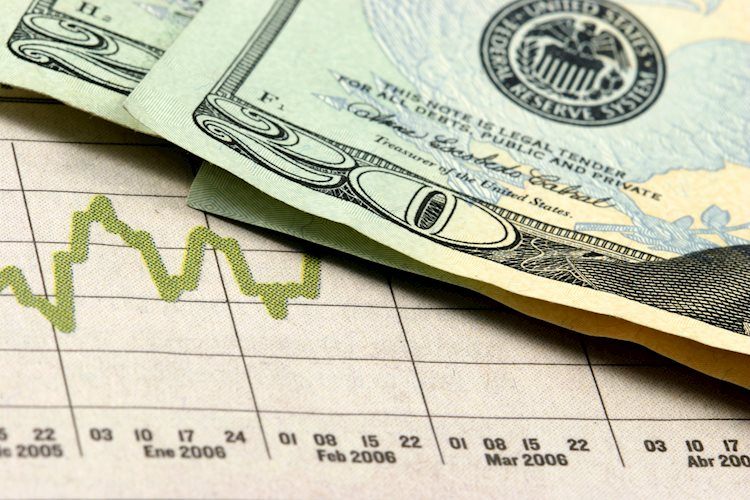- US Dollar finding buyers as markets are pricing in fewer cuts in 2024.
- Thursday’s Retail Sales will be key for market bets.
- Strong US data later in the week could continue pushing the DXY higher.
The US Dollar Index (DXY), which measures the value of the USD against a basket of six currencies, continues rising as markets are giving up their hopes of two cuts by the Federal Reserve (Fed) this year.
The US economy displays mixed signals, exhibiting both signs of a slowdown and resilience. The Fed has indicated that it will monitor incoming data to adjust the pace of its monetary easing policy accordingly.
Daily digest market movers: US Dollar adds more ground on quiet Monday
- Fed easing expectations tempered by strong jobs and CPI data with fewer rate cuts priced in.
- Fed speakers hold cautious stance on rate cuts and remain data-dependent.
- Headline September CPI rose as expected last week, while core CPI was slightly higher than anticipated.
- The super core rate remained unchanged at 4.3% YoY, indicating persistent price pressure.
- US Retail Sales data on Thursday is projected to show continued consumer spending strength supported by favorable economic conditions.
- Business inventories and industrial production reports on Thursday will provide insight into overall economic activity.
DXY technical outlook: DXY maintains bullish momentum, approaching overbought conditions
The DXY index maintains upward momentum with indicators suggesting overbought conditions near the crucial 100-day SMA. That being said, the Relative Strength Index (RSI) and Moving Average Convergence Divergence (MACD) are approaching overbought territory, signaling a potential pullback.
Supports are located at 103.00, 102.50 and 102.30, while resistances are found at 103.30, 103.50 and 104.00.
US Dollar FAQs
The US Dollar (USD) is the official currency of the United States of America, and the ‘de facto’ currency of a significant number of other countries where it is found in circulation alongside local notes. It is the most heavily traded currency in the world, accounting for over 88% of all global foreign exchange turnover, or an average of $6.6 trillion in transactions per day, according to data from 2022. Following the second world war, the USD took over from the British Pound as the world’s reserve currency. For most of its history, the US Dollar was backed by Gold, until the Bretton Woods Agreement in 1971 when the Gold Standard went away.
The most important single factor impacting on the value of the US Dollar is monetary policy, which is shaped by the Federal Reserve (Fed). The Fed has two mandates: to achieve price stability (control inflation) and foster full employment. Its primary tool to achieve these two goals is by adjusting interest rates. When prices are rising too quickly and inflation is above the Fed’s 2% target, the Fed will raise rates, which helps the USD value. When inflation falls below 2% or the Unemployment Rate is too high, the Fed may lower interest rates, which weighs on the Greenback.
In extreme situations, the Federal Reserve can also print more Dollars and enact quantitative easing (QE). QE is the process by which the Fed substantially increases the flow of credit in a stuck financial system. It is a non-standard policy measure used when credit has dried up because banks will not lend to each other (out of the fear of counterparty default). It is a last resort when simply lowering interest rates is unlikely to achieve the necessary result. It was the Fed’s weapon of choice to combat the credit crunch that occurred during the Great Financial Crisis in 2008. It involves the Fed printing more Dollars and using them to buy US government bonds predominantly from financial institutions. QE usually leads to a weaker US Dollar.
Quantitative tightening (QT) is the reverse process whereby the Federal Reserve stops buying bonds from financial institutions and does not reinvest the principal from the bonds it holds maturing in new purchases. It is usually positive for the US Dollar.
Read the full article here

